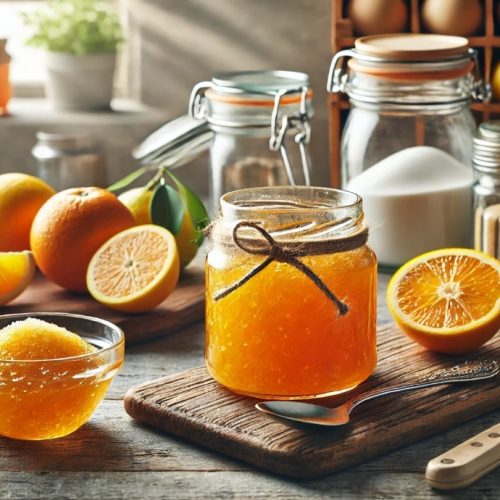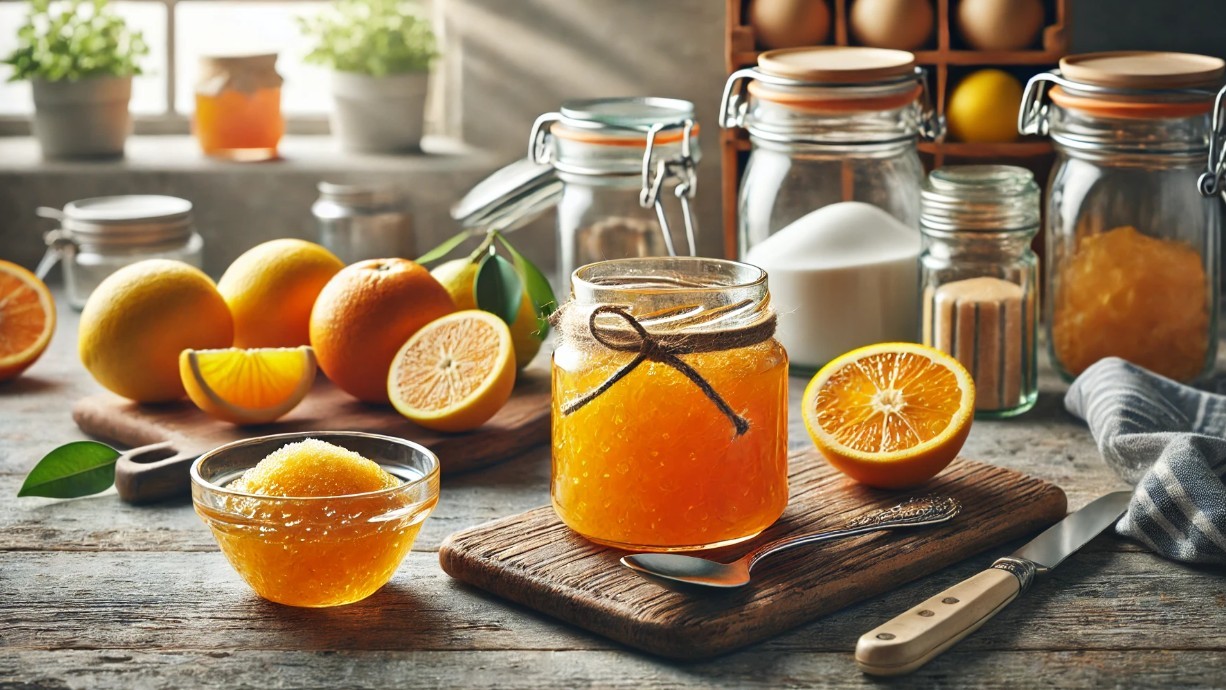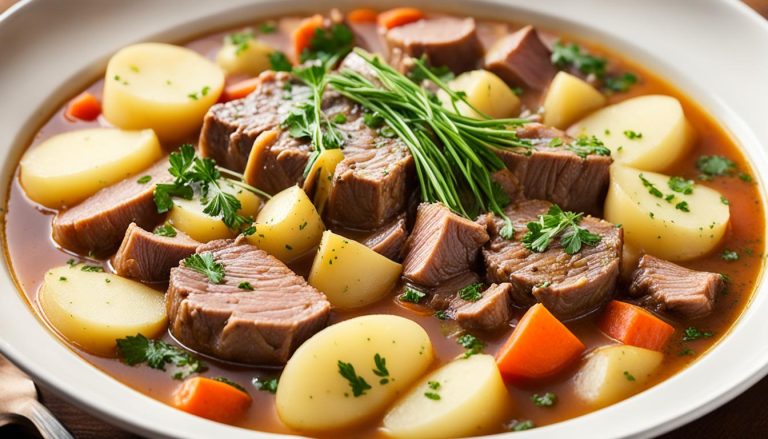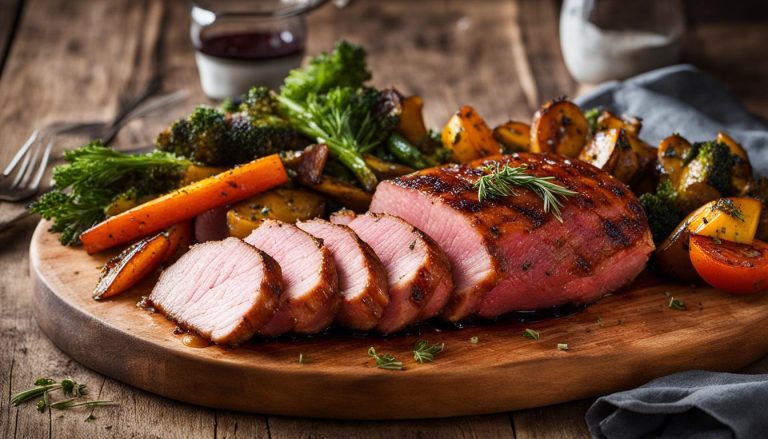There’s something heartwarming about the process of making marmalade from scratch. The vibrant aroma of simmering citrus fills the kitchen, wrapping you in a sense of nostalgia and accomplishment.
For me, marmalade recipe is more than just a spread—it’s a symbol of comfort, tradition, and creativity. Every jar holds the essence of tangy citrus balanced with sweetness, a versatile delight that transforms the simplest breakfast into a luxurious treat.
If you’ve ever been captivated by the bright, glossy jars of marmalade at the market or wished to recreate the tangy-sweet magic at home, this guide is for you. Let’s dive into the world of marmalade-making and unlock the secrets of this timeless British classic.
What Makes Marmalade Special?

Marmalade is more than just a preserve; it’s a culinary tradition deeply rooted in British heritage. Originating from the Mediterranean and perfected in the UK, marmalade is cherished for its unique blend of bitter and sweet flavours.
Unlike jam, which focuses on the pulp or juice of fruits, marmalade uses the peel of citrus fruits, delivering an aromatic tang and a chewy texture that’s simply delightful.
The use of Seville oranges in marmalade became popular in the 18th century due to their naturally high pectin content and tartness, making them ideal for preservation.
Today, marmalade is celebrated in events like the World Marmalade Awards, showcasing its importance in British food culture.
What makes marmalade even more special is its versatility. It’s a breakfast essential, spreading cheer on toast, croissants, or crumpets. Beyond breakfast, marmalade becomes an ingredient in glazes, sauces, and even cocktails.
Its ability to balance sweet and savoury notes makes it a favourite for pairing with everything from cheeses to roasted meats.
Ingredients You’ll Need for a Classic Marmalade Recipe
To create the perfect marmalade, you’ll need:
| Ingredient | Quantity |
| Seville oranges | 1 kg |
| Lemons | 2 |
| Granulated sugar | 2 kg |
| Water | 2 litres |
Tips for Choosing Ingredients
- Seville Oranges: Their bitterness and high pectin content make them ideal for marmalade.
- Sugar: Use granulated sugar for clarity in your marmalade.
- Lemons: They balance the sweetness and help with setting.
Step-by-Step Guide to Making Homemade Marmalade
Preparing the Ingredients

- Choose the Right Citrus: While Seville oranges are traditional, you can experiment with grapefruits, lemons, or blood oranges. Make sure the fruit is fresh and aromatic.
- Wash Thoroughly: Since you’ll be using the peel, it’s crucial to wash the fruit well to remove any dirt or wax. A quick scrub under warm water helps.
- Peel and Slice: Carefully peel the oranges, keeping the zest in thin, even strips. Chop the zest to your preferred thickness—thinner strips cook faster and are easier to spread.
- Deseed and Retain Pectin: As you segment the fruit, save the seeds. These seeds are rich in natural pectin, which is essential for setting your marmalade. Tie them in a muslin cloth to simmer with the mixture later.
Cooking the Marmalade

- Combine Ingredients: Add the chopped fruit, zest, and water to a large, heavy-bottomed pan. Include the muslin bag with seeds.
- Simmer Gently: Over medium heat, bring the mixture to a boil, then reduce to a simmer. Let it cook for 1.5–2 hours until the peel softens and the liquid reduces.
- Add Sugar Gradually: Once the peel is tender, remove the muslin bag and stir in the sugar. Allow the sugar to dissolve completely before increasing the heat to boil.
- Test for Setting Point: To ensure your marmalade sets, use the plate test. Place a small amount on a chilled plate and let it cool. If it wrinkles when pushed with a finger, it’s ready. Alternatively, use a sugar thermometer—marmalade sets at 104°C (220°F).
Storing and Preserving

- Prepare Jars: Sterilise your jars and lids by washing them in hot soapy water and heating them in the oven at 140°C for 10 minutes.
- Fill and Seal: While the marmalade is hot, ladle it into the sterilised jars. Seal immediately to create a vacuum, which helps preserve the marmalade.
- Label and Store: Once cooled, label your jars with the date and type of marmalade. Store in a cool, dark place for up to a year.
Common Marmalade-Making Mistakes to Avoid
Overcooking the Marmalade
- Overcooking results in a bitter or caramelised flavour that overpowers the citrus.
- To avoid this, keep a close eye on the marmalade as it approaches the setting point.
- Using a sugar thermometer ensures precision.
Undercooking the Marmalade
- Runny marmalade often happens when it hasn’t been cooked to the right temperature.
- Ensure you test for the setting point using the plate test or thermometer.
- Remember, the marmalade thickens further as it cools.
Imbalanced Flavours
- Too much sugar can overpower the tanginess of the citrus, while too little sugar might make the marmalade unpalatable or difficult to set.
- Stick to the recommended sugar-to-fruit ratio of 2:1.
- Adding a lemon to the recipe helps balance the sweetness.
Improperly Prepared Ingredients
- Leaving too much pith (the white part of the peel) can make your marmalade overly bitter.
- Spend a little extra time ensuring the zest is thin and the pith is minimal.
Inadequate Sterilisation
- If jars aren’t properly sterilised, your marmalade may spoil quickly.
- Always sterilise jars and lids before use, and ensure they’re sealed tightly to keep out air and bacteria.
Skipping the PectinL
- Natural pectin is what gives marmalade its signature gel-like consistency.
- If you discard the seeds or don’t include enough citrus, your marmalade might remain runny.
- If needed, you can add commercial pectin, but the natural method is always preferable.
Not Allowing Marmalade to Set Before Using
- Marmalade needs time to fully set after being sealed in jars.
- It’s tempting to dig in right away, but letting it rest for a day or two will give you a better consistency and flavour.
Variations and Enhancements to Try

Mary Berry Marmalade Recipe Variation: Orange Liqueur Twist
- Difference: Adding a splash of orange liqueur, like Cointreau, brings an extra layer of complexity and warmth to the marmalade, enhancing the citrus flavor with subtle notes of sweetness and alcohol.
Instructions:
- Preparation: Start by following Mary Berry’s traditional recipe. Slice the peel of the oranges and lemons thinly and extract their juice, ensuring you retain the pith.
- Boiling: Combine the fruit slices, juice, and water in a large pan. Bring to a boil, simmer for about 1.5 hours until the fruit is tender and softened.
- Setting: Add sugar (use the same quantity as per the original recipe) and stir until dissolved. Bring the mixture to a rolling boil and cook until it reaches the setting point (about 105°C or 220°F on a thermometer).
- Flavor Enhancement: After removing the pan from the heat, add 2 tablespoons of orange liqueur (Cointreau or Grand Marnier) to the hot mixture. Stir well to incorporate the liqueur, and let the marmalade cool slightly before ladling it into sterilized jars. Seal tightly once cooled.
- Result: The addition of orange liqueur lends a warm, aromatic citrus flavor, making the marmalade slightly more luxurious and aromatic.
Delia Smith Marmalade Recipe Variation: Fresh Ginger Infusion
- Difference: Adding freshly grated ginger introduces a subtle warmth and spice that complements the citrus flavors, adding a unique twist to the marmalade’s taste.
Instructions:
- Preparation: Begin with Delia’s base recipe. Peel the oranges and lemons, then slice the peel thinly and extract the juice.
- Boiling: In a large saucepan, combine the prepared fruit and water as per the recipe. Bring the mixture to a boil, then reduce the heat and simmer for around 1.5 hours, or until the fruit becomes soft and translucent.
- Ginger Infusion: At this point, add a thumb-sized piece of fresh ginger (about 1–2 inches) finely grated into the pot. Let it infuse as the mixture continues to simmer.
- Setting: Add the sugar (following the original recipe’s quantity) and stir until completely dissolved. Increase the heat and bring the mixture to a boil, cooking it until the setting point is reached (105°C or 220°F).
- Final Step: If desired, remove the ginger pieces for a smoother texture, or leave them in for a stronger flavor. Ladle the marmalade into sterilized jars, seal, and let it cool.
- Result: The ginger adds a spicy, aromatic element to the marmalade, creating a more complex flavor profile that balances well with the tangy citrus.
Jamie Oliver Marmalade Recipe Variation: Vanilla Essence
- Difference: Introducing vanilla gives the marmalade a fragrant, sweet undertone that balances out the sharpness of the citrus. The vanilla will mellow the acidity and add richness.
Instructions:
- Preparation: Begin by following Jamie Oliver’s base recipe. Slice the oranges and lemons and extract the juice.
- Boiling: In a large pan, combine the fruit, juice, and water. Bring to a boil, then simmer for about 1.5 hours, until the peel becomes soft and tender.
- Vanilla Infusion: After the initial simmer, add the seeds from 1 vanilla pod (scraped out with a knife) or 1 teaspoon of vanilla extract. Stir the mixture to evenly distribute the vanilla flavor.
- Setting: Once the vanilla is incorporated, add the sugar and stir to dissolve. Increase the heat and bring the mixture to a rolling boil. Cook until the marmalade reaches the setting point (105°C or 220°F).
- Final Step: Ladle the hot marmalade into sterilized jars, seal, and let it cool.
- Result: The vanilla adds a creamy, aromatic element to the marmalade, enhancing the citrus without overpowering it, resulting in a sweet and smooth flavor profile.
Nigel Slater Marmalade Recipe Variation: Grapefruit and Orange Blend
- Difference: Replacing part of the oranges with grapefruit adds a tangy, slightly bitter edge that contrasts beautifully with the sweetness of the oranges, creating a more complex marmalade with a subtle citrus bitterness.
Instructions:
- Preparation: Follow Nigel Slater’s base recipe for preparing fruit. Instead of using all oranges, replace half of the oranges with pink grapefruit (about 3-4 grapefruits for every 6-8 oranges). Slice the peel thinly and extract the juice from all the fruit.
- Boiling: Combine the citrus peel, juice, and water in a large saucepan. Bring it to a boil, then reduce to a simmer and cook for about 1.5 hours until the fruit peel is tender and the mixture thickens.
- Setting: Add the sugar (according to the recipe’s proportions) and stir until fully dissolved. Increase the heat and boil the mixture until it reaches the setting point (105°C or 220°F).
- Final Step: Once the marmalade has reached its setting point, remove from the heat. Ladle the marmalade into sterilized jars and seal once cooled.
- Result: The addition of grapefruit gives the marmalade a unique tanginess with a hint of bitterness, balancing the sweetness of the orange and making it a more refreshing and complex preserve.
Nutritional Information for Homemade Marmalade
Curious about the nutritional value of your homemade marmalade? Here’s an approximate breakdown of the key nutrients per tablespoon (20g) of a classic orange marmalade:
| Nutrient | Amount per 20g (1 tbsp) |
| Calories | 55 |
| Total Fat | 0g |
| Saturated Fat | 0g |
| Cholesterol | 0mg |
| Sodium | 1mg |
| Total Carbohydrates | 14g |
| Sugars | 13g |
| Fibre | 0.5g |
| Protein | 0g |
| Vitamin C | 3-5% of Daily Value (DV) |
Note: Nutritional values may vary depending on the type and amount of citrus, sugar, and any additional ingredients used in your marmalade recipe. Homemade marmalade is naturally free of artificial preservatives and additives, making it a wholesome choice!
Conclusion: The Joy of Homemade Marmalade
Creating your own marmalade is a labour of love, but the rewards are undeniable. Each spoonful tells the story of carefully chosen ingredients, patient stirring, and the satisfying pop of sealed jars.
Whether you’re enjoying it slathered on warm toast, as a glaze for roasted meats, or as the secret ingredient in a citrus-infused dessert, homemade marmalade is a testament to the art of preservation and the joy of sharing food made with care.
So why not embrace the citrus season and give this recipe a try? With a little effort and a lot of zest, you’ll find yourself with jars of sunshine ready to brighten up your kitchen and your day.
Frequently Asked Questions About Marmalade
What’s the difference between marmalade and jam?
Marmalade uses citrus fruit and includes peel, giving it a bitter edge, while jam is sweeter and smoother.
Why is Seville orange marmalade so popular?
Seville oranges have a high pectin content and a distinctive bitter flavour that’s perfect for marmalade.
How do I fix marmalade that won’t set?
Reheat the marmalade, adding a little more sugar or lemon juice to enhance the pectin.
Can I freeze marmalade for long-term storage?
Yes! Marmalade freezes well and can last up to a year.
Is homemade marmalade healthier than store-bought?
Yes, as you control the sugar content and avoid additives or preservatives.
What can I do with leftover citrus peel?
Candied peel or zest can be used in baking or as a garnish.
How long does marmalade last once opened?
Once opened, refrigerate and use within a month.

Marmalade Recipe
Ingredients
- 1 kg Seville oranges
- 2 Lemons
- 2 kg Granulated sugar
- 2 litres Water
Instructions
- Choose the Right Citrus: While Seville oranges are traditional, you can experiment with grapefruits, lemons, or blood oranges. Make sure the fruit is fresh and aromatic.
- Wash Thoroughly: Since you’ll be using the peel, it’s crucial to wash the fruit well to remove any dirt or wax. A quick scrub under warm water helps.
- Peel and Slice: Carefully peel the oranges, keeping the zest in thin, even strips. Chop the zest to your preferred thickness—thinner strips cook faster and are easier to spread.
- Deseed and Retain Pectin: As you segment the fruit, save the seeds. These seeds are rich in natural pectin, which is essential for setting your marmalade. Tie them in a muslin cloth to simmer with the mixture later.
- Combine Ingredients: Add the chopped fruit, zest, and water to a large, heavy-bottomed pan. Include the muslin bag with seeds.
- Simmer Gently: Over medium heat, bring the mixture to a boil, then reduce to a simmer. Let it cook for 1.5–2 hours until the peel softens and the liquid reduces.
- Add Sugar Gradually: Once the peel is tender, remove the muslin bag and stir in the sugar. Allow the sugar to dissolve completely before increasing the heat to boil.
- Test for Setting Point: To ensure your marmalade sets, use the plate test. Place a small amount on a chilled plate and let it cool. If it wrinkles when pushed with a finger, it’s ready. Alternatively, use a sugar thermometer—marmalade sets at 104°C (220°F).
- Prepare Jars: Sterilise your jars and lids by washing them in hot soapy water and heating them in the oven at 140°C for 10 minutes.
- Fill and Seal: While the marmalade is hot, ladle it into the sterilised jars. Seal immediately to create a vacuum, which helps preserve the marmalade.
- Label and Store: Once cooled, label your jars with the date and type of marmalade. Store in a cool, dark place for up to a year.









